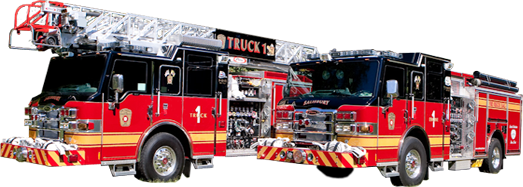Press Releases
Harvest Season Road Safety
The Arrival Of Fall Also Means It’s Harvest Time! Make Safety A Priority As Motorists and Farmers Are Required To Share the Road
Autumn officially arrives on Thursday September 22! That means it will soon be time to hit the roads for fall festivals, pumpkin picking, and viewing fall foliage. It also means it’s time for the fall crop harvest season. More and more motorists will come into proximity with farm equipment on rural roads, increasing opportunities for collisions between farm apparatus and passenger vehicles.
Road safety is especially important as farmers and motorists share the road during harvest season.
Harvest season generally brings a time when there is an increase in collisions between farm equipment and other vehicles. Vehicle collisions are often the result of the speed differential between slower-moving farm equipment and passenger cars and trucks. Many times passenger vehicle drivers simply don't have enough time to react if they do not recognize the farm equipment soon enough.
For Farmers
Farmers can take steps to enhance farm machinery visibility. Before traveling on public roads remember to:
· Lock brake pedals.
· Adjust mirrors for good vision.
· Make sure that all warning flashers, lights, and slow moving vehicle (SMV) emblems are in proper operating condition, clean, and easily visible. If they are covered with dust, wipe them off before leaving the field.
· Check tire inflation pressures. Inflate the tires to the maximum recommended pressure for long-distance travel.
When traveling on public roads:
· Watch for potholes or obstacles that could tip the tractor.
· Listen for cars. Often vehicles will rapidly approach from the rear at three to four times the speed of the tractor.
· Stay alert at all times to avoid a serious accident. Do not use the cell phone or two-way radio while operating equipment on public roads.
· Keep a constant lookout for pedestrians, animals, mailboxes, steep ditch embankments and other roadway obstacles.
· Slow down for sharp curves or when going down a hill.
· Consider using an escort vehicle to follow behind.
· Be cognizant of high traffic times, usually mornings and late afternoons. While it often is impossible to avoid operating on the roads during these times, it may be possible to limit road transportation.
Other safety recommendations include:
· Place the SMV sign, mounted point up, on the vehicle two to six feet above the ground and as near to the rear center as possible.
· Make sure the tractor has the following lighting and signage:
o two headlights;
o at least one tail lamp, mounted on the left side facing the rear of the tractor;
o at least two amber warning lights, visible from front and rear, mounted at the same level at least 42 inches above ground level;
o at least two red reflectors, visible from the rear and mounted on either side;
o amber warning extremity lights, visible from front and rear, mounted over dual- or triple-wheeled vehicles;
o and the Speed Identification Symbol (SIS) on high-speed tractors and equipment.
For Motorists
Keep in mind the following safety tips for motorists as you share the road with farm equipment:
· Farm machinery has a legal right to use public roads just as other motor vehicles.
· Farm machinery can unexpectedly turn onto a public road from a field or driveway. Farm machinery travels slower than normal traffic, often at speeds of 25 miles per hour or less. Automobile drivers must quickly identify farm equipment and slow down immediately to avoid rear-end crashes.
· Farm machinery operators may not be able to see you because the large equipment or a load can block part of their rear view. If you can't see the driver, the driver can't see you.
· Slow-moving farm machinery traveling less than 25 miles per hour should display a slow moving vehicle emblem on the back of the equipment. This is a quickly identifiable sign to other motorists.
· Machinery that is half on the road and half on the shoulder may suddenly move completely onto the road.
· Extra-wide farm machinery may take up more than one lane to avoid hitting obstacles such as mailboxes and road signs.
Before passing farm machinery:
· Check to be sure the machinery is not turning left. Look for left turn lights or hand signals. If the machinery slows and pulls toward the right side of the road, the operator is likely preparing to make a wide left turn. Likewise, sometimes to make a right turn with wide equipment, the driver must fade to the left.
· Determine if the road is wide enough for you and the machinery to safely share.
· Look for roadside obstacles such as mailboxes, bridges, or road signs that may cause the machinery to move to the center of the road.
· Be sure there is adequate distance for you to safely pass.
Rural road rage can be negated if everyone takes the responsibility to have extra patience, careful driving habits, and use high-visibility markings and lighting.
For more information, visit http://www.netwellness.org/healthtopics/poison/farmer.cfm



